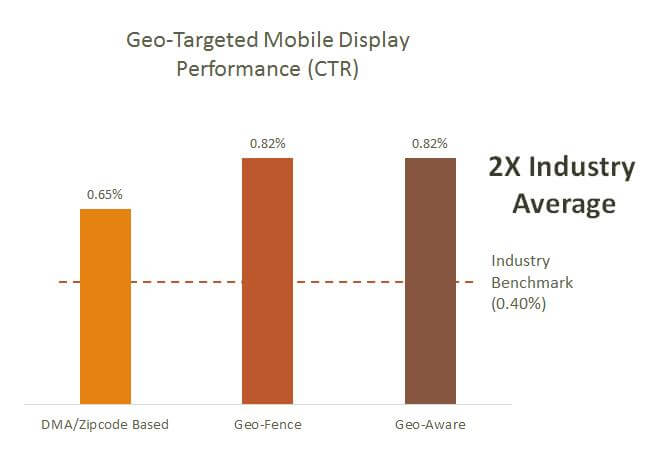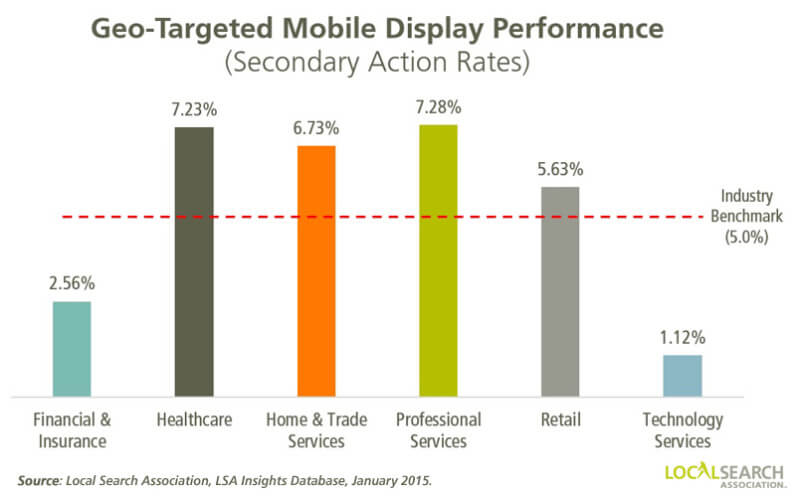Location Based Geo-Targeting Boosts Paid Search Ad Performance…Or Does It?
Columnist Wesley Young discusses the importance of truly local data in search marketing decisions.

Mobile device usage continues to soar, and it now accounts for more than half of time spent on digital media. “Always on” consumers are checking their mobile devices upwards of 100 times a day, and as a result, advertisers have been paying more and more attention to mobile.
This rise in mobile use particularly impacts local search. Data from Thrive Analytics found that 60% of consumers use mobile devices to find information on local products and services, and 40% of those are on-the-go when searching.
Growth of mobile local search rose four times that of mobile internet use, according LSA’s Local Mobile Search Study. Importantly, 70% of consumers are willing to share their location information if they believe they are getting something of value in return, such as coupons and loyalty points. Yet, according to Econsultancy’s Cross-Channel Marketing Report 2013, just 39% of agencies are currently using location based data to target mobile consumers.
There is plenty of data to support the use of location based data to improve the performance of ads including paid search ads. A common cited and well supported metric is that geo-targeted ads perform two times better than the industry average for non-targeted campaigns. But what if you cite this statistic to your advertiser and then the ads you place do not perform at that rate? Failing to meet expectations can cause real problems with client retention and satisfaction.
For local search campaigns, the solution is to dig deeper into the data. Based on data from 10,000 real ad campaigns in LSA’s new LSA Insights database, click through rates (CTR’s) for mobile display ads varied based on the type of geo-targeting used.
While all provided a boost to CTR performance, geo-fencing and geo-targeting resulted in a true two times improvement, while general DMA/Zip Code targeting resulted in a 50% improvement.
Looking even deeper reveals more variance. A number of opinions report that Secondary Action Rates (such as calls, directions, or requests for more information) are a better gauge of performance than CTR’s. An examination by LSA Insights of secondary actions from mobile display geo-targeted ads shows that Geo-Aware ads performed twice as well as DMA/Zip Code-based ads. Even though all geo-targeting outperformed the industry benchmark, geo-fencing and geo-aware ads resulted in more secondary actions than DMA/Zip Code-based ads.
Further by its nature, the local marketplace varies widely based on many factors, the most obvious of which is location. Truly local campaigns should be customized to local geography, local culture, and business category for the best success. Fortunately, today that data exists and is increasingly available.
The Local Search Association just launched LSA Insights, a local media performance and planning tool for the local advertising and marketing community that analyzes over 350,000 advertiser campaigns in a variety of media such as the over 150,000, and growing, mobile campaigns.
This volume of campaigns allows analysis on a very granular level including by fields such as media type, location, business category, ad type, time frame and many others. Results of past ad performance that predict future performance vary widely depending on selected fields or other factors.
For example, the LSA Insights database further showed that there is nearly a 7 times variance between verticals in effectiveness of driving secondary actions when using geo-targeted mobile display ads. The chart below reveals that geo-targeted mobile ads are particularly effective at driving secondary actions for healthcare, home & trade services and professional services.
Does that mean performance of geo-targeted ads for all businesses in the Financial & Insurance vertical or in Technology Services is low? There is surely variance in performance based on geography, business category and other factors. These rates are also relative to the industry benchmark so they are not absolute indicators. However, the chart illustrates the importance of digging deeper into the data to get better insights on ad performance including paid search ads.
How Can Local Advertisers Use Location Data?
Beyond illustrating the importance of detailed analysis, the above charts also illustrate a broader point: Local advertisers should begin to further embrace location data to better target mobile ads in order to reach consumers when they are in a certain area and may be looking to buy. Here are a few ways advertisers can utilize a consumer’s location and target mobile ads.
Geo-Aware Ads detect the real-time location of a mobile user and serve a location appropriate message. The message can be adjusted to fit local conditions, season, weather, events and the like. For example, a coffee shop may display different coupons for tourists in Times Square than locals in Brooklyn.
Geo-Fencing sets a perimeter around a physical location and serves mobile ads to users in that specific area. The ads may or may not include creative messages acknowledging the user’s location or include location-based features such as a store locator. For example, a car service can target ads only to users that are within half a mile of an airport or train station.
Geo-Conquesting is a variation of geo-fencing, where a perimeter is set around a competitor’s location and ads are served to mobile users in that area. So instead of delivering a mobile ad to consumers who are in the vicinity of your store, you can deliver the ad to them when their near your competitor to entice them to do business with you instead.
It’s been said before – as consumer habits shift, so will the prominence and importance of mobile advertising. The ability to target mobile ads using location data is a powerful tool to reach consumers that has a high return on investment for advertisers. And the more targeted the better. Today, relevant data is available, even for small agencies, that permit highly local decisions about who, when, where and how to target ads.
Contributing authors are invited to create content for Search Engine Land and are chosen for their expertise and contribution to the search community. Our contributors work under the oversight of the editorial staff and contributions are checked for quality and relevance to our readers. The opinions they express are their own.
Related stories
New on Search Engine Land


